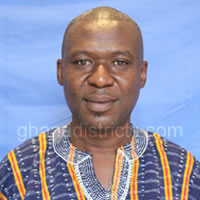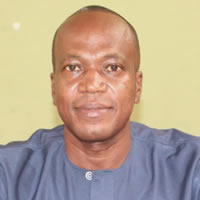Agriculture is still the mainstay of the country’s economy. Together with hunting and forestry, it accounts for slightly over 48% of total employment in Ghana. In the Cape Coast , agriculture is also the main source of livelihood in the rural communities. In 1984 10.5% of the economically active population of the District were engaged in farming and fishing (Ghana 1984, 2002). Today, the figure has substantially increased to 70%.
This probably explains the increase in the agricultural growth rate from 2.5 in the early 1990s to between 3% and 4% since 2001, with a projection of up to 6% by 2004 (MOA 2002). Farming is done in the northern parts whilst fishing is the main occupation along the southern coastal parts. Presently, some 260 sq km of land representing 28% of the total cultivable land area of 390 sq km is under crop cultivation. They are good prospects for expansion of the arable land area in the next few years given the high priority the Government has placed on farming.
Land Tenure System
Generally, the indigenous people own the land through family or kingship ties. The administration of these lands is by way of custody. Distribution and use of the land is in the hands of family heads. Cultivation of these lands by non-indigenous people is characterized by the ’abunu’ and ’abusu’ systems of acquisition. Other forms of acquisition of land also exist, though on a limited scale such as leasehold, hiring and outright purchase.
Farm Sizes and Crop Production
Agricultural production is mainly at the subsistence level. The fairly high rate of growth of the population has worsened the situation of land availability; average farm sizes are therefore below 1.5 hectares. It is not surprising that large-scale farming projects are non-existent . Cash crop production is limited to the northern parts where some citrus, cocoa and oil palm are cultivated but on a generally limited scale.
The major food crops cultivated are maize, cassava and cocoyam. Since 1994 yam cultivation has been expanding but the crop is still a minor one compared to production levels in the Northern and Volta regions of the country. Yields per hectare of the various crops are generally lower than expected except for plantain and citrus fruits. The yield of 870 metric tonnes not only exceeded the 2000 yield of 839 tonnes but also exceeded the Ministry’s target of 850 metric tonnes (see Table 9).
Apart from the crops listed above, the Metropolitan Area also produces coconut, which thrives well on the sandy beaches. The crop has over the last four to five years suffered a great setback due to the incidence of the Cape Saint Paul Wilt disease, which has destroyed hundreds of hectares of coconut plantations.
The Ministry of Agriculture is collaborating with researchers to find a solution to the problem, but until then, affected farmers are advised and encouraged to go into the production of other crops. One thing that would also be of help to the farmers is for the Coconut Research and Rehabilitation Project, based in Sekondi, to adopt Cape Coast for assistance as is being done to the KEEA and AAJK. Districts.
Poultry and Livestock.
This sector has made modest gains in the last two to three years, recording an annual growth of 3% within the period. Poultry, turkey, rabbits, pigs, sheep, grass-cutter and goats have all shown some improvement, particularly in 2002 (Table 10).
Table 9. Cape Coast Metropolitan Assembly -Poultry and livestock production.
The role of the Veterinary unit in stabilizing production in the poultry and livestock sector has been quite tremendous. The high incidence of rabies recorded up to 1999, averaging 20 per year, has been substantially reduced. For instance, there were only 5 cases in 2001 and 11 in 2002. The Assembly was proactive in terms of support to the Veterinary unit and must be commended. The Assembly has promised to support the Unit to achieve 90% coverage in the vaccination of pets as well as offer extension services to poultry and livestock farmers.
Other projects
Apart from the mainstream agriculture there are other projects designed to enhance crop production by introducing new technology to farmers. One is the Ministry’s attempt to encourage the production of non-traditional crops, which is a policy to diversify agriculture in the country generally. In the Municipal District, farmers are encouraged to go into the production of grass-cutters, mushroom, citronella, cashew and Jathropha (physical oil plant). Bee-keeping and snail cultivation are also being encouraged.
Another area of importance is the Root and Tuber Improvement Project, which aims to assist farmers to cultivate improved varieties of cassava and sweet potatoes. Since its inception in 2000, some 698 farmers, comprising 453 males and 245 females have responded favourably to the call and cultivated 61.62 hectares of cassava. Another 150 others cropped 11.34 hectares of sweet potatoes. A MAFA/ADRA Collaboration has also assisted 475 farmers to grow tree and food crops in 14 communities in the District. The crops include citrus, cashew, maize and woodlots. Seedlings and other inputs are supplied to the farmers by ADRA on credit basis, to be repaid after harvest. The Project is affecting the conditions of farmers positively and should be sustained.
The Sasakawa Global 2000 Project has also been in the Metropolitan Assembly for a while. It is one Project that has transformed the lives of many farmers in the country and the District. Its main focus is to assist the Ministry to train farmer based organizations (FBO) and women groups to build the capacity of their members in business management, Book Keeping and Customer Relations. Vegetable farmers at Krudu and Kakumdo benefited from the programme in 2002. The programme will be extended to other groups this year as well as in 2004. Finally, there is the Land and Water Management Project, which is assisted by the Government of Denmark through DANIDA.
The focus of the Project is to offer training to Agricultural Extension Officers who in turn assist farmers to sustain production through sound water and land management. Since its inception in 2000 over 7million cedis has so far been spent on the Model Village Land Development Programme at Kyirakomfo near Brimso where the Kakum River flows. It is expected that other village communities would also benefit from the programme in the next few years before the project elapses.
The Government of Ghana in conjunction with the World Bank initiated a Medium Term Agricultural Development Programme (MTADP) through which the economy would achieve a growth rate of 5% per annum by the year 2005. Agricultural policy is committed to adopting modern technology to make the set target achievable. Government’s declared policy is, thus, aimed at eliminating or minimizing malnutrition, producing enough food and supplying raw materials for the agro-based industries.The MTADP has also brought into focus the idea of diversification in agricultural production, where the non-traditional export crops play a major role.
Cultivated Land Area:
Except for few forest reserves areas, almost all the land has once been cultivated. About two thirds (2/3) of the land surface is currently under cultivation.
Farming Population:
About 70% of the people are farmers with an average farm size of 0.5 hectares. Currently, there are about 70 farming villages in the metropolis.
Agricultural Operations:
Mostly un-mechanized small to medium-scale farming, that uses single traditional tools (hoe and cutlass) is being practised. Commercial and backyard poultry, sheep and goat rearing, backyard piggery, and fish farming occupy the farmers.
Fish:
Fishing activities in the Municipality is on fish-catch from the sea, lagoons, ponds, rivers and streams. The sea is however the major source of fish, accounting for about 90% of the total catch. The fishermen have been requesting for proper landing space and large fishing vessels to increase fish production. There is room for investors to establish cold storage facilities which the fishermen wish to see built nearer to improve the fishing industry. Investors could also consider setting up processing industries, boat construction, development of aqua-culture, and the development of stock ponds for fingerlings.
Fisheries Sub-Sector Capacity Building Project:
Under the above project, the local fishermen and fish mongers at various landing beaches, including Ekon and Abrofo-Mpoano, are mobilized to form Community-Based Fisheries Management Committee (CBFMC). A Consultant has been engaged to oversee the smooth running of the project.
Crops:
Crops production in the Metropolis is very low. Maize, cassava, platain, cocoyam, yam, oil palm, coconut and vegetables such as tomatoes, pepper, garden eggs, cabbages are all planted under rain-fed conditions.They are cultivated on small-scale. Mixed cropping is undertaken on land prepared traditionally, by using simple tools like hoes and cutlasses. The Assembly has plans of developing feeder roads to reach food producing centres and facilitating farmers’ access to credit through the formation of co-operatives, groups or associations that would also enable them to have access to technology transfer and a ready market.
Ministry of Food and Agriculture (MOFA) / NGO Collaboration:
The Ministry of Food and Agriculture (MOFA) has been in close collaboration with Adventist Relief Agency (ADRA). Whilst ADRA supports its programmes with funds and logistics, the MOFA backs it with technical advice.
Youth in Agriculture:
Ten youth groups were formed and assisted with 2.0 million cedis per group. An amount of 20.0 million cedis was disbursed on the Youth in Agricultural Project in the Metropolis. A fraction of the CCMA’s Common Fund is also being used to assist the needy farming communities to expand their farms and purchase processing machines like cassava grater and presser.
Date Created : 11/16/2017 5:24:50 AM






 facebook
facebook X (twitter)
X (twitter) Youtube
Youtube +233 593 831 280
+233 593 831 280 0800 430 430
0800 430 430 GPS: GE-231-4383
GPS: GE-231-4383 info@ghanadistricts.com
info@ghanadistricts.com Box GP1044, Accra, Ghana
Box GP1044, Accra, Ghana